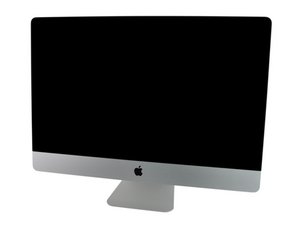Mac doesn't start after installing SSD
I followed the guide to install an additional SSD in my iMac (27'', mid 2011). After I put everything back in place, it won't start. When I press the power button, the fans start to spin for a short time, then stop, then start again, and so on.
Is there any indicator to figure out what's wrong? I checked all connectors I disconnected when disassembling, they're all back in place.
Is dit een goede vraag?



 3,4k
3,4k  1,1k
1,1k  2,6k
2,6k 

8 opmerkingen
I have the same problem. Did you figure out what was wrong? Please help me..
door cisco.fernandes
I'm having the same issue. How did you solve your problem?
door Neilson
@fixitm - What do the diagnostic LED's tell you? Review Djh145 for more information on them.
door Dan
i only have led 1 , but when i press the power button, led 1 turns off.
door Neilson
Lets try again,
The LED's we are talking about are the ones inside the system (Diagnostic LED's). Is that the LED you are talking about here LED #1 ?
door Dan
3 commentaren meer tonen